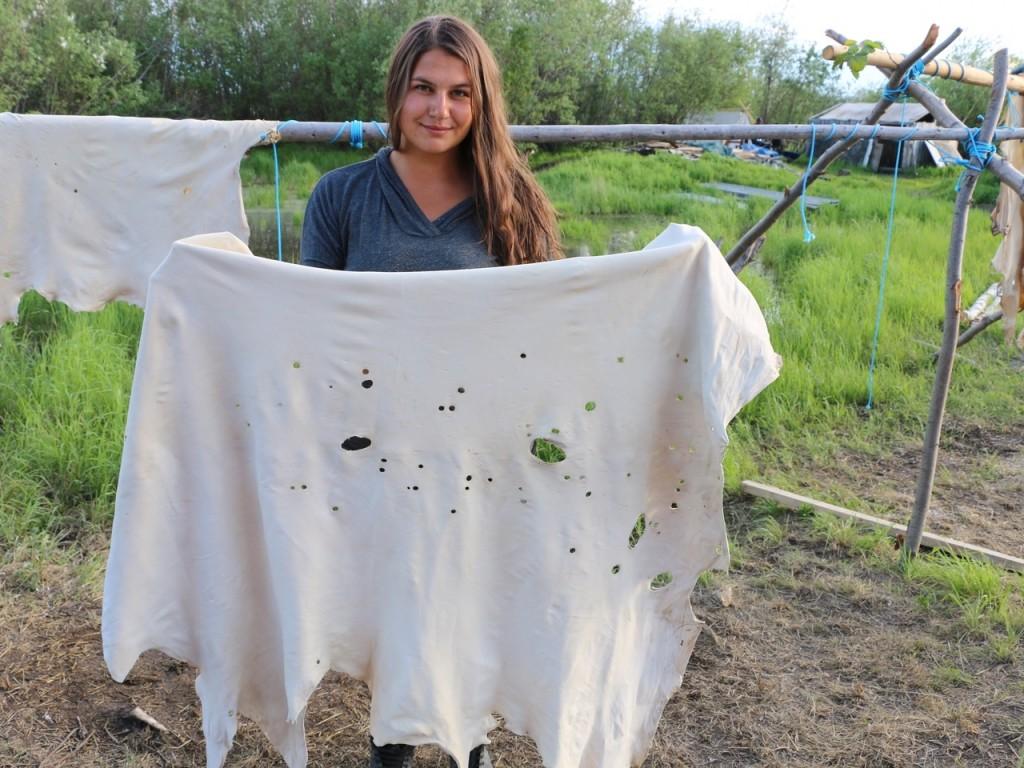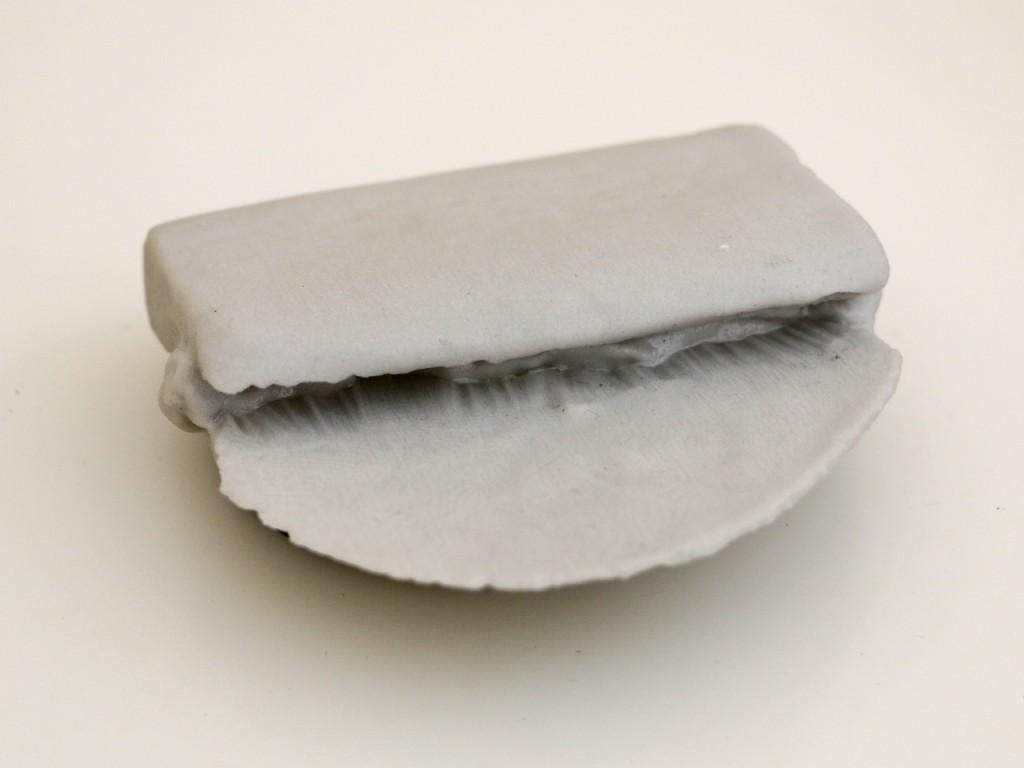The search for a connection with our ancestors is an important part of understanding who we are today. Humans have been trying to integrate their distant past into the practice of their lives for as long as we have been self-aware. For some, that connection is a mere curiosity, while for others–like Tania Larssen, a student at the Institute of American Indian Arts at Santa Fe–that connection ran much more deeply.
 Larssen grew up in France with a Swedish father and a Gwich’in mother and as she began to develop her own identity, found herself drawn to a connection with her North American ancestors. The Gwich’in are a First Nations people living mostly in Alaska and the Northwest Territories, above the Arctic Circle, with a long and storied history. Traditionally, their lives have been profoundly intertwined with the herds of porcupine caribou that populate the territory.
Larssen grew up in France with a Swedish father and a Gwich’in mother and as she began to develop her own identity, found herself drawn to a connection with her North American ancestors. The Gwich’in are a First Nations people living mostly in Alaska and the Northwest Territories, above the Arctic Circle, with a long and storied history. Traditionally, their lives have been profoundly intertwined with the herds of porcupine caribou that populate the territory.
There is a certain amount of magic that we feel when holding objects that have been touched by others long gone. (The sky high prices for rock and roll memorabilia is one example of this connection.) For Larssen, this magic was present in the tools that have been used by her people since time immemorial. However, because her mother did not live among her people and had none of her own tools to pass to her daughter, Larssen didn’t have the contact she craved.
“My mom didn’t have tanning tools, so I don’t have tanning tools. So I thought, I might as well go find the oldest tools I could find and replicate them,” Larssen said. “I knew there were some tools in the [Smithsonian] collection and I really wanted to see them, maybe for a sense of authenticity, and to just be able to have that connection with my ancestors through these tools that are in the museum.”
 Rather than relying on second hand imagery, she went to the Smithsonian Museum to see the tools for herself. She was able to scan the tools in their collection and recreate these antique hand tools using the latest in 3D printing technology. For some, this may seem odd, but to Larssen, the connection was natural:
Rather than relying on second hand imagery, she went to the Smithsonian Museum to see the tools for herself. She was able to scan the tools in their collection and recreate these antique hand tools using the latest in 3D printing technology. For some, this may seem odd, but to Larssen, the connection was natural:
“The biggest thing about Native Americans and First Nations is that we always adapted to the technologies we came across, so it’s a totally normal step to use 3D scanning and 3D printing, because the new tool is in front of us. This is a great way to actually take the reference of these tools, 3D print them and then be able to recreate our old tools through new technologies. It’s very exciting because we’re talking about hundreds of years old techniques and traditions and this brand new technology that we can use to recreate it and continue our culture, our traditions.”
 Larssen found a particular tool, for scraping the hide of caribou, that fit as if it had been made for her hands – she was able to recreate that tool and can use it as her own in a way that doesn’t damage or disrespect the original instrument. These tools were meant to be held, to be an extension of the hands that used them. Bringing them out from behind the glass cases and passing them around is not an option but the 3D printed versions can be handled by anyone. In this way, Gwich’in history comes alive through the experience of the object.
Larssen found a particular tool, for scraping the hide of caribou, that fit as if it had been made for her hands – she was able to recreate that tool and can use it as her own in a way that doesn’t damage or disrespect the original instrument. These tools were meant to be held, to be an extension of the hands that used them. Bringing them out from behind the glass cases and passing them around is not an option but the 3D printed versions can be handled by anyone. In this way, Gwich’in history comes alive through the experience of the object.
If that isn’t magic at its finest, I don’t know what is.
Do you know of other historical artifacts that have been recreated thanks to 3D scanning and printing technology? Tell us about it at the Gwich’in Native Tools forum thread over at 3DPB.com.
 [Source: vice]
[Source: vice]
Subscribe to Our Email Newsletter
Stay up-to-date on all the latest news from the 3D printing industry and receive information and offers from third party vendors.
You May Also Like
Gorilla Sports GE’s First 3D Printed Titanium Cast
How do you help a gorilla with a broken arm? Sounds like the start of a bad joke a zookeeper might tell, but it’s an actual dilemma recently faced by...
Nylon 3D Printed Parts Made More Functional with Coatings & Colors
Parts 3D printed from polyamide (PA, Nylon) 12 using powder bed fusion (PBF) are a mainstay in the additive manufacturing (AM) industry. While post-finishing processes have improved the porosity of...
$25M to Back Sintavia’s Largest Expansion of Metal 3D Printing Capacity Since 2019
Sintavia, the digital manufacturing company specializing in mission-critical parts for strategic sectors, announced a $25 million investment to increase its production capacity, the largest expansion to its operations since 2019....
Velo3D Initiates Public Offering in a Bid to Strengthen Financial Foundations and Drive Future Growth
Velo3D (NYSE: VLD) has been among a number of publicly traded 3D printing firms that have attempted to weather the current macroeconomic climate. After posting a challenging financial report for 2023,...































